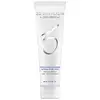What's inside
What's inside
 Key Ingredients
Key Ingredients

 Benefits
Benefits

 Concerns
Concerns

 Ingredients Side-by-side
Ingredients Side-by-side

Water
Skin ConditioningDicaprylyl Carbonate
EmollientHydrogenated Polydecene
EmollientSimmondsia Chinensis Seed Oil
EmollientSorbitol
HumectantCetearyl Olivate
Sorbitan Olivate
EmulsifyingCetearyl Alcohol
EmollientPentylene Glycol
Skin ConditioningOlive Oil PEG-7 Esters
EmollientSodium Hydroxide
BufferingLauryl Betaine
CleansingPolysorbate 60
EmulsifyingDisodium EDTA
Parfum
MaskingBenzyl Salicylate
PerfumingXanthan Gum
EmulsifyingTocopherol
AntioxidantSodium Chloride
MaskingWater, Dicaprylyl Carbonate, Hydrogenated Polydecene, Simmondsia Chinensis Seed Oil, Sorbitol, Cetearyl Olivate, Sorbitan Olivate, Cetearyl Alcohol, Pentylene Glycol, Olive Oil PEG-7 Esters, Sodium Hydroxide, Lauryl Betaine, Polysorbate 60, Disodium EDTA, Parfum, Benzyl Salicylate, Xanthan Gum, Tocopherol, Sodium Chloride
Water
Skin ConditioningSodium Laureth Sulfate
CleansingAcrylates Copolymer
Jojoba Esters
EmollientGlycerin
HumectantCocamidopropyl Betaine
CleansingMannitol
HumectantCellulose
AbsorbentSpiraea Ulmaria Extract
AstringentDisodium Cocoamphodiacetate
CleansingCocamidopropyl Hydroxysultaine
CleansingTocopheryl Acetate
AntioxidantNiacin
SmoothingNiacinamide
SmoothingCaprylyl Glycol
EmollientLaureth-2
CleansingHexylene Glycol
EmulsifyingSodium Sulfate
Disodium EDTA
Ammonium Lactate
BufferingSalicylic Acid
MaskingHydroxypropyl Methylcellulose
Emulsion StabilisingSodium PCA
HumectantBiosaccharide Gum-1
HumectantButylene Glycol
HumectantSodium Chloride
MaskingSodium Hydroxide
BufferingPhenoxyethanol
PreservativeEthylhexylglycerin
Skin ConditioningBenzoic Acid
MaskingParfum
MaskingCI 77289
Cosmetic ColorantCitronellol
PerfumingHexyl Cinnamal
PerfumingLimonene
PerfumingLinalool
PerfumingWater, Sodium Laureth Sulfate, Acrylates Copolymer, Jojoba Esters, Glycerin, Cocamidopropyl Betaine, Mannitol, Cellulose, Spiraea Ulmaria Extract, Disodium Cocoamphodiacetate, Cocamidopropyl Hydroxysultaine, Tocopheryl Acetate, Niacin, Niacinamide, Caprylyl Glycol, Laureth-2, Hexylene Glycol, Sodium Sulfate, Disodium EDTA, Ammonium Lactate, Salicylic Acid, Hydroxypropyl Methylcellulose, Sodium PCA, Biosaccharide Gum-1, Butylene Glycol, Sodium Chloride, Sodium Hydroxide, Phenoxyethanol, Ethylhexylglycerin, Benzoic Acid, Parfum, CI 77289, Citronellol, Hexyl Cinnamal, Limonene, Linalool
Ingredients Explained
These ingredients are found in both products.
Ingredients higher up in an ingredient list are typically present in a larger amount.
Disodium EDTA plays a role in making products more stable by aiding other preservatives.
It is a chelating agent, meaning it neutralizes metal ions that may be found in a product.
Disodium EDTA is a salt of edetic acid and is found to be safe in cosmetic ingredients.
Learn more about Disodium EDTAParfum is a catch-all term for an ingredient or more that is used to give a scent to products.
Also called "fragrance", this ingredient can be a blend of hundreds of chemicals or plant oils. This means every product with "fragrance" or "parfum" in the ingredients list is a different mixture.
For instance, Habanolide is a proprietary trade name for a specific aroma chemical. When used as a fragrance ingredient in cosmetics, most aroma chemicals fall under the broad labeling category of “FRAGRANCE” or “PARFUM” according to EU and US regulations.
The term 'parfum' or 'fragrance' is not regulated in many countries. In many cases, it is up to the brand to define this term.
For instance, many brands choose to label themselves as "fragrance-free" because they are not using synthetic fragrances. However, their products may still contain ingredients such as essential oils that are considered a fragrance by INCI standards.
One example is Calendula flower extract. Calendula is an essential oil that still imparts a scent or 'fragrance'.
Depending on the blend, the ingredients in the mixture can cause allergies and sensitivities on the skin. Some ingredients that are known EU allergens include linalool and citronellol.
Parfum can also be used to mask or cover an unpleasant scent.
The bottom line is: not all fragrances/parfum/ingredients are created equally. If you are worried about fragrances, we recommend taking a closer look at an ingredient. And of course, we always recommend speaking with a professional.
Learn more about ParfumChances are, you eat sodium chloride every day. Sodium Chloride is also known as table salt.
This ingredient has many purposes in skincare: thickener, emulsifier, and exfoliator.
You'll most likely find this ingredient in cleansers where it is used to create a gel-like texture. As an emulsifier, it also prevents ingredients from separating.
There is much debate on whether this ingredient is comedogenic. The short answer - comedogenic ratings don't tell the whole story. Learn more about comegodenic ratings here.
The concensus about this ingredient causing acne seems to be divided. Research is needed to understand if this ingredient does cause acne.
Scrubs may use salt as the primary exfoliating ingredient.
Learn more about Sodium ChlorideSodium Hydroxide is also known as lye or caustic soda. It is used to adjust the pH of products; many ingredients require a specific pH to be effective.
In small amounts, sodium hydroxide is considered safe to use. However, large amounts may cause chemical burns due to its high alkaline.
Your skin has a natural pH and acid mantle. This acid mantle helps prevent harmful bacteria from breaking through. The acid mantle also helps keep your skin hydrated.
"Alkaline" refers to a high pH level. A low pH level would be considered acidic.
Learn more about Sodium HydroxideWater. It's the most common cosmetic ingredient of all. You'll usually see it at the top of ingredient lists, meaning that it makes up the largest part of the product.
So why is it so popular? Water most often acts as a solvent - this means that it helps dissolve other ingredients into the formulation.
You'll also recognize water as that liquid we all need to stay alive. If you see this, drink a glass of water. Stay hydrated!
Learn more about Water